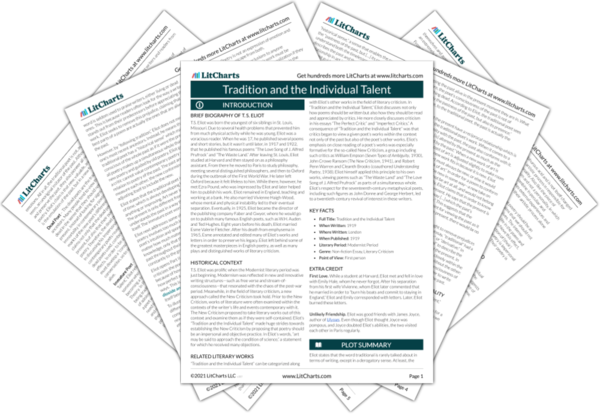The Past, Present, and Tradition
In Part 1 of “Tradition and the Individual Talent,” Eliot points out that most people only appreciate a poet if the poet is different from their predecessors. In this difference, readers “pretend to find what is individual.” However, Eliot claims that the best parts of a poem are actually the ones in which the dead poets “assert their immortality.” In other words, the best parts of a poet’s work resemble the poetry of the past…
read analysis of The Past, Present, and TraditionEmotion, Art, and Impersonality
In Part 2 of “Tradition and the Individual Talent,” Eliot depicts the perfect poet as completely separate from their work. To do this, he argues for a difference between personal and artistic emotion. Although we might think that the intensity of an emotion in a poem comes directly from the intensity of the poet’s experience of the emotion, this is actually not the case. In fact, Eliot claims that the poet’s emotions may even be…
read analysis of Emotion, Art, and ImpersonalityIndividuality, Novelty, and Conformity
Throughout Eliot’s “Tradition and the Individual Talent,” the great poet makes sacrifices for the greater good of their work. In Part 1 of the essay, Eliot suggests that the poet sacrifices novelty and individuality for the sake of adhering to tradition; their poetry, instead of being totally new, is “a living whole” of all poetry. In Part 2, Eliot argues that the poet makes poetry effective by depersonalizing it. All in all, the poet is…
read analysis of Individuality, Novelty, and Conformity







